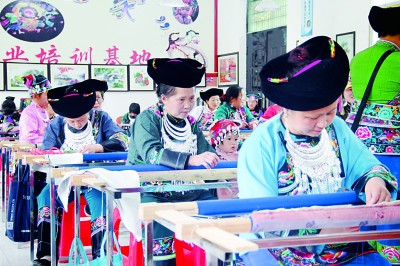Gujian Leng Knowledge | Fifth facade of traditional architecture
Author:Architectural culture Time:2022.06.28
The roof, known as the "fifth facade" of the building, has a rich roof shape and diverse types of traditional buildings compared with modern architecture. On the one hand, the roof is full of romantic mood and poetic wisdom, becoming beautiful presentation, beauty imagination, and beauty creation. On the other hand, the roof is also affected by the traditional ritual system, which is a symbol of the orderly hierarchical system.

The facade image of ancient Chinese buildings is usually composed of the base, the body body and the roof. As the top of the house building, like a dazzling crown, it has become an important symbol of traditional Chinese architecture.
Such as the wings, such as the Sagas, such as the birds, such as the puppets, the gentleman enters.
—— "Book of Songs · Xiaoya Stanan"
"Stanan" is a poem to celebrate the fall of the Zhou Dynasty. "Ru Si Fei", describing the palace roof as light as bird's wings, like a brilliant chicken.

The structure of the roof mainly includes three parts: roof, roof and load structure.
The roof, as the name suggests, refers to the surface of the roof of the building. Between the roof and the eaves, it is supported by the bearing structure. It is the largest part of the roof.
The roof, along the roof turning point or the roof to the wall and the beams, use tiles, bricks, gray and other materials for masonry. In a certain level, the roof spine has a decisive role in the image of the roof.
According to its position, the ridge of ancient buildings is divided into positive ridges, vertical ridges, blog ridges, ridges, corner ridges, etc. The horizontal roof at the top of the roof is called a positive ridge, which is the junction of the two major slopes. The positive ridge can be said to be the mother of the roof ridge, which derives and changes to other roofs.

The complex roof and load structure of Xuanjian Building
The load -bearing structure of the roof usually refers to the beam structure above the pillar, which mainly include beams, columns, 檩, 椽, 枋, etc. These components are combined to undertake the weight of the upper floor of the entire building, and the weight is transmitted to the wall or column to support the roof.

Ancient architectural roof structure diagram

Structural profile of Zhengding Longxing Temple

The ancient Chinese roof, after thousands of years of historical development and cultural accumulation, has a variety of forms and unique forms. The most common basic forms are: hard mountains, hanging mountains, Xieshan style, tantalum -type, and tip. Each roof has the difference between single eaves and heavy eaves, ridges and rolling sheds.
Top
Features: slopes on both sides, the slope does not come out of the gable wall
The top of the hard mountain is the most common form of roof in ancient buildings. There are only two slopes on the roof, one positive ridge and four vertical ridges. The gables of the left and right sides intersect with the roof. All the wooden beams are sealed in the gable wall. It is often used in residential, gardens, and temples.

Hard Mountain top chart

The corner of Jinan Guangzhi Academy
Peak
Features: two -sided slope, the slope is hanging from the mountains out of the wall
The top of the hanging mountain is also known as the top of the mountain, just like the top of the hard mountain, and the ends of the roof are out of the gables on each side of the roof. It is mostly used in palaces, altar temples as buildings or secondary houses.

Hangshan top icon

Foguang Temple Manjushri Hall
Xieshan Top
Features: There are many roof ridges
At the top of Xieshan, the Song Dynasty was called the Jiuzhidian, Cao Dian or Xiamen. There is a nine ridges in the appearance, one positive ridge, four vertical ridges, and four ridges. On the front and back slopes on both sides, and the left and right half slopes. In the official building of the Qing Dynasty, the triangle area of the mountain flower above the half slope can be added with various decorations.
A variety of variants are derived from the top of Xianxianshan, such as the top of the cosmetic mountains and the top of the rolling shed, etc., which enriched the type of ancient building roof and highlight the changing forms.

Xieshan top chart

Beijing Tiananmen
Dian Dou Ding
Features: four -sided slope
The top of the Temple, also known as the Four Aya Hall and the Five Ride Temple. There are five ridges, four slopes on the front and back, the front and back of the front and back, and there are four vertical ridges on the left and right slopes. The top of the Palace is the highest -level roof of ancient Chinese buildings. It is mostly used for royal architecture, high -level sacrifice buildings and religious buildings, such as the prayer of the year in the Temple of Heaven in Beijing and Huayan Temple Daxiong Temple.

庑 庑 顶 顶

Heavenly Prayer Nianmen
Spire
Features: The top is concentrated in one point
The top of the spire, the roof is cone -shaped, the top is concentrated, that is, the top of the treasure. There is no positive ridge at the top of the spire. According to the number of vertical ridges, it is divided into a few horns. It is a more lively and elegant roof shape. It is commonly used in pavilion, Xie, Pavilion, Tower and other buildings.

Round -corner spire icon icon

The Temple of the Temple of Heaven

The roof form in ancient Chinese buildings has strict levels and system requirements. For example, the top grade of the Temple is the highest. It is the top of the Xieshan and the top of the hanging mountain in turn, and finally the top of the hard mountains;
The specific hierarchy and applicable architectural functions can be seen below:

The roof is the most typical symbol representative of ancient Chinese architecture. It is rich in form and exquisite shape. It is an important treasure of Chinese architectural culture. It has great art and practical value.

[1] Wang Quanying. Briefly describe the roof form of ancient buildings [J]. Decision exploration (above), 2018 (06): 40-42.
[2] Wang Zuo. Talk about the roof of ancient Chinese buildings-take Shenyang Palace Museum as an example [J]. China National Expo, 2021 (14): 205-207+210.
[3] Li Jinlong. Ancient Chinese architectural roof analysis [J]. Drama art, 1996 (03): 112-117.
[4] Gu Xiangle. Analyst of ancient Chinese architecture roofs [J]. Cultural relics identification and appreciation, 2021 (19): 30-32.
[5] Gao Tong. Chinese ancient architecture roof ceremony culture [C] //. In March 2015, the paper set of architectural technology and management academic exchanges. [Publisher unknown], 2015: 247+238.Features and scientific protection of wooden architecture [J]. Cultural relic building, 2008 (00): 9-20.
Review | Cai Yangbo Cui Shuping
Edit | Zhu Ben Shen Yuanyuan
Capture | Bo Haowen
School pair | Xu Hongyun
- END -
Prosperous Ecological Literature Construction of Beautiful China -2022 Sixth Five -Year Environmental Day National Field Activity China Ecological Literature Forum Speaking (2)

On June 5th, one of the National Fifth National Home Activity Series Parallel Foru...
Non -genetic inheritance protection: From "raising in deep boudoirs" to "fly into the

Miao embroidery non -heritage workshop in Huayuan County, Hunan Province. Data pic...